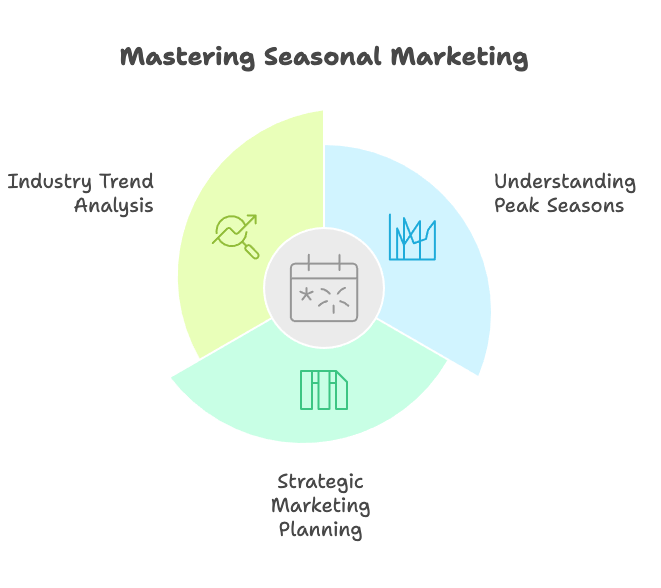Most businesses are impacted by changing seasons. People are less likely to buy products such as sunscreen during winter, for instance. There likely won’t be much interest in Christmas during Spring.
For some organizations, however, the seasons almost entirely dictate their profits, and ultimately their success or failure. Airlines and hotels, for instance, see a significant boost during vacation times, and many tourist agencies are suffering greatly as a result of the novel coronavirus. It’s important to understand where you fall on this scale.
Are there certain times of the year during which you experience a huge boom, whilst others are much slower? Or do you manage to bring in plenty of business year-round?
Armed with this understanding, you should create a marketing strategy that capitalizes on the time of year, leveraging imagery that resonates with your audience and tapping into your busiest seasons.
Understand Peak Seasons
How does your business ebb and flow over the course of a fiscal year? You’re the only one who can predict when your business will likely experience the greatest upturn in customers and profits, based both on your own experience and your organization’s history. The more accurately you can predict the peaks and valleys in subscriptions or sales, the better.
Going back to our example of an airline company, the most essential detail in seasonal airline marketing is not, as one might expect, the date of travel. It’s the date at which a customer begins planning and booking their trip. This means that you might almost paradoxically see yourself marketing for a winter boom back in the summer months.
The best advice we can give here is to study the trends and look at other businesses in your industry. When do their peaks and valleys seem to occur? How do they time and plan their marketing efforts? When do they tend to offer sales and host giveaways?

Get Creative
Especially if you’re operating a seasonal business, you’re likely facing stiff competition, particularly during peak operating season. Black Friday for retail is an excellent example of this in practice. If everyone is offering massive deals and discounts, how exactly does your brand distinguish itself?
Say you’re operating a gym. Obviously, you want to capitalize on the annual wave of New Year’s resolutions to inspire new signups. What if, however, you went back a bit further and offered a two-for-one Black Friday exclusive set to start in the New Year?
Ask anyone who’s tried to get in shape. They’ll tell you it’s easier to commit to a fitness goal with a friend. It’s incredibly easy to get discouraged. Boredom can also set in once you hit a plateau. However, knowing someone else is working towards their goals with you can be incredibly helpful.
Again, our best advice here is to spend a bit of time looking at what your competitors have said and done during their peak seasons. Figure out a way that you can offer something either similar or better than them, and brainstorm some way that you can stand out in your marketing in the process.
Never Stop Strategizing
You shouldn’t be thinking about new marketing strategies when you’re elbow-deep in your busiest season. Instead, you should be using downtime to plot out a comprehensive marketing strategy, then adjust it as needed based on current events. Always have a plan, and always understand that every plan and strategy must be flexible enough to change with the times.
This applies to scheduled social posts just as it does your overall marketing strategy. You should never be treating your social feeds as a ‘fire and forget’ medium. Instead, you should regularly take the time to revisit and re-evaluate before each post goes live.
Basically, use your downtime to plan things out, then adjust and adapt as you keep moving forward.
6 Seasonal Strategies for Small Businesses in 2025 – Business Victoria
This resource outlines practical seasonal marketing strategies tailored for small businesses, emphasizing the importance of understanding seasonal fluctuations in demand and aligning




